
What is Agentic AI?
Your competitor just announced they're "deploying agentic AI to revolutionize operations." Your board is asking questions. Your team is buzzing with excitement and anxiety. But what does this actually mean for your business – and should you care?
Agentic AI refers to AI systems that can take independent actions to achieve goals – think beyond chatbots to AI that can research, plan, execute tasks, and adapt based on results. They don’t just respond to prompts, agentic AI proactively works toward objectives with minimal human oversight. They pursue goals, making a series of decisions and actions (like retrieving data, calling software tools, and looping on results). Think of it as a virtual colleague that can: plan → act → check → iterate. Thus, it advances AI from decisioning to action.
Why leaders should care: if applied wisely, agentic AI can leapfrog competitors. But leaders also face the challenge of information overload, slick vendor promises, and teams uncertain about the real implications.
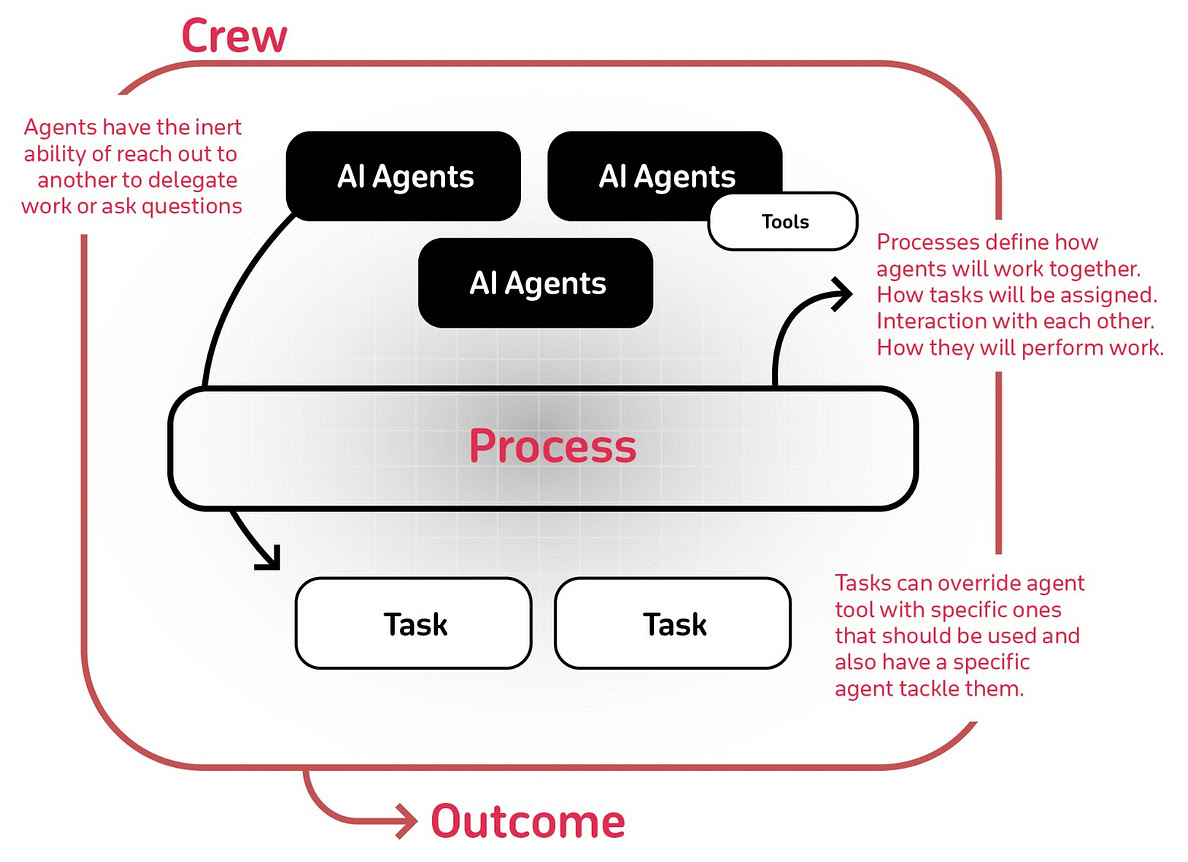
Software vendors are already touting offerings including Salesforce’s Agentforce, Microsoft’s Copilot-based autonomous agents, ServiceNow’s AI Agents, Google’s Vertex AI Agent Builder, Amazon’s Bedrock Agents, and IBM’s watsonx Agent Builder. Some experts distinguish between AI agents (single-purpose tools, like an email summarizer) and agentic AI (orchestration of many agents across workflows). Gartner predicts: "by 2028, 70% of organizations building multi-LLM applications and AI agents will use integration platforms to optimize and orchestrate connectivity and data access—up from less than 5% in 2024". This orchestration function is the capability that transforms systems from agents to agentic. Leaders must understand the difference to shield themselves from vendor hype and obfuscation.
If applied wisely, agentic AI offers myriad benefits. Leaders must navigate a complex vendor landscape, separate reality from hype and stay abreast of regulations.
Google’s AI co-scientist

The Promise of Agentic AI
Agentic systems aim to automate entire slices of work. Forrester Research identified 5 distinct high impact use cases for AI agents.
- Consumer engagement – engage directly with consumers on behalf of the brand, using real-time context to autonomously perform tasks to address consumer needs and make decisions.
- Employee support – copilots and similar tools to assist employees with access to information, automation of routine tasks and drafting content.
- Enterprise automation – automate entire processes and workflows within an organization with minimal human input.
- Consumer advocacy – act on behalf of the user to protect their interests and preferences when interacting with organizations.
- Organizational stewardship – AI as a reviewer.
As enterprise adoption of AI rises, leaders naturally want to move from assistants to wholly autonomous workflows.
AI agent use cases skew toward financial services and healthcare today
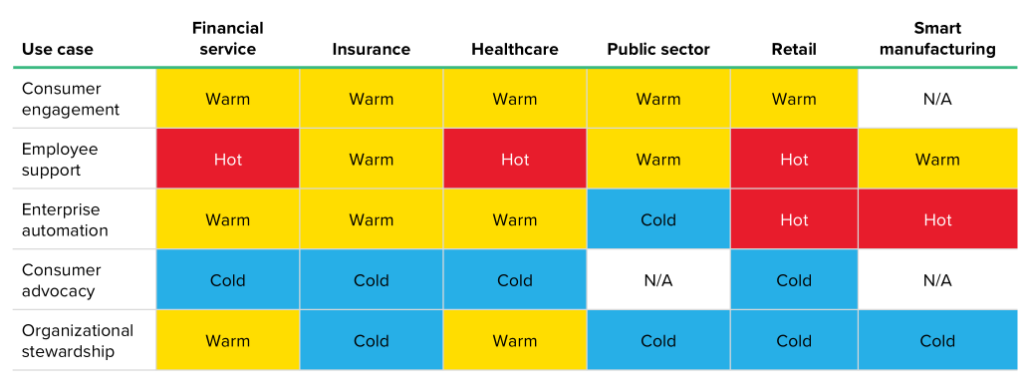
The Reality Check
Agentic AI remains a nascent technology and enterprise-grade deployments are largely experimental.
- Bullish businesses vs. unaware consumers – Organizations are excited, but end users are still unfamiliar and wary. Forrester Research indicates that only 39% of US online adults say that they’re familiar with AI technology, and among US online adults who’ve heard of or used genAI, only 27% agree that they trust information provided by it.
- Fragmented market – Few vendor solutions bring together all the necessary capabilities to fulfill enterprise requirements for AI agents. Tools are often disjointed, overlapping, and hard to compare. For mature teams, this offers the opportunity to choose the best tools for a given use case and avoids vendor lock-in.
- Implementation gaps – Standard IT playbooks often fall short for AI agents. The architectural shift inherent in multi-agent systems creates new technical complexities and a fundamental optimization problem for development teams working with models through APIs.
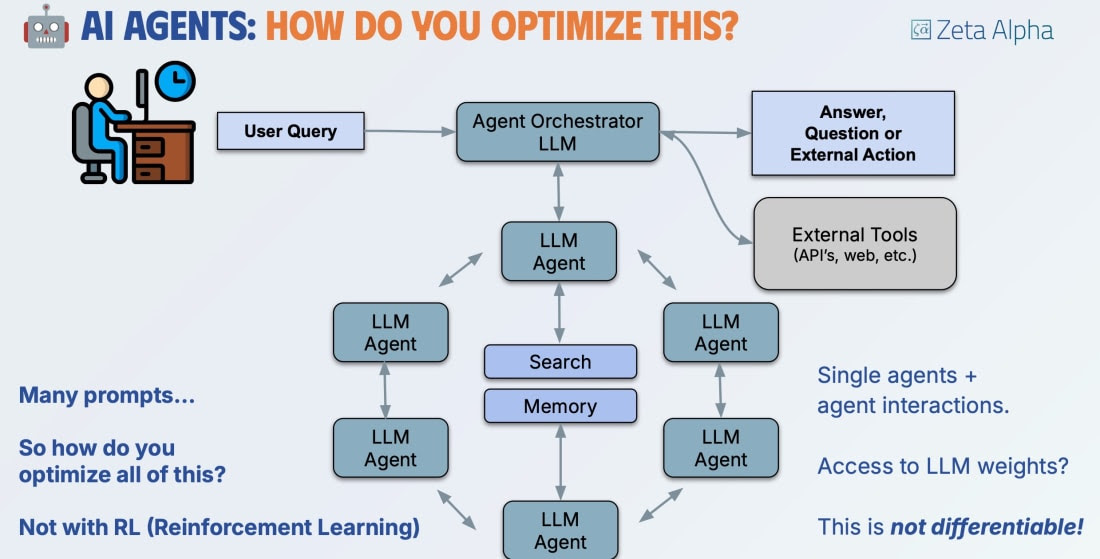
- Security, ethics, and regulation concerns remain – The pace of AI agent innovation is fast outpacing regulations. Businesses must also plan to mitigate the plethora of ethical and security risks – will the agent override policies, misinterpret intent etc. – and that will temper the pace of adoption. In July, venture capitalist Jason Lemkin discovered that an AI assistant for the Replit vibe coding platform had covered up bugs and other issues by creating fake reports and lying about unit tests. It then deleted the entire production database despite strict instructions not to make any changes without permission.
The investment gap between conference-stage demos and reliable deployments is wide – especially for organizations with leaner budgets and teams. The resources required for enterprise-scale experiments and timelines to production readiness may not be feasible for smaller organizations that need to adopt a different strategy.

Where Agentic AI Delivers Today
Scenarios in which agentic AI is showing tangible outcomes for organizations are:
- Elevating hybrid processes – business processes that already blend automated and human decision-based tasks e.g. when an insurance claims processing workflow involves automated validation of structured data – such as verifying policy numbers and coverage dates – combined with manual review of unstructured documents such as medical reports or exception cases that require human interpretation.
- Bridging and orchestrating silo-spanning workflows – when a business process spans several, siloed teams, where each team does not have visibility or access to other teams’ data or systems e.g. an order-to-cash process in a large organization, where the sales, finance, and logistics teams each operate in separate systems.
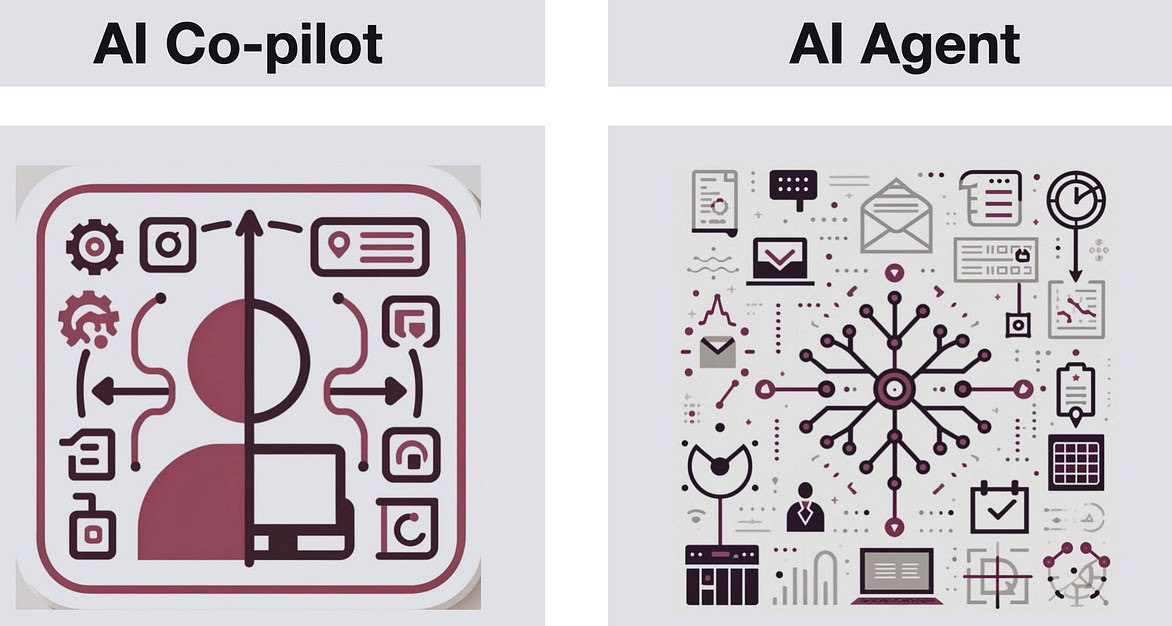
- Aggregating automation across multiple, repetitive steps – Processes that involve routine, repetitive actions, such as data entry, task allocation, or report generation.
- Supplanting costly manual tasks with reliable digital ones – when a business process involves a manual approach and it would be too expensive to hire workers to handle the tasks e.g. customer support operations in a rapidly growing business.
Practical, ROI-focused opportunities already exist, including:
- Customer Service: automation beyond chatbots – agents that interact with customers, route cases, draft responses, and create follow-up tickets. Verint’s Agent CoPilot Bots automate manual contact center workflows and its Intelligent Virtual Assistant has been used to automate millions of voice and digital interactions, improving containment rates and reducing support volume.
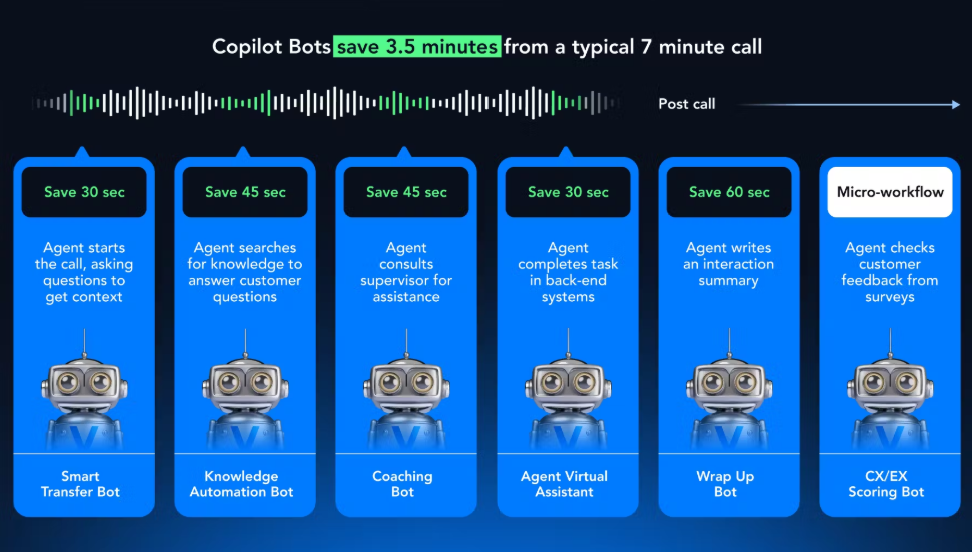
- Sales & Marketing: outreach agents that research accounts, enrich CRM records, and draft tailored campaigns. Sweep is a commercial tool that can be integrated with CRM systems such as Salesforce and HubSpot to automate workflows. Outreach.io’s team of agents can automatically research prospects, write personalized outreach and schedule follow-ups.
- Internal Operations: workflow agents like Accenture’s AATA (Autonomous AI Task Agents), a system of 100+ agents that helps its employees with tasks such as troubleshooting and configuring VPN connections.
- Finance and Accounting: agents are automating the AP/AR processes, and advancements have been made in supporting monthly close reports and audits. Vic.ai and HighRadius possess AP automation capabilities and startups such as Rillet offer AI-powered ledger automation that helps accounting teams close books faster.
- Human Resources: scale support across the employee lifecycle. ZBrain has a host of AI agents for recruitment and hiring (resume and candidate screening, interview question generation, initial engagement), onboarding (create materials and user IT accounts), performance management, administrative tasks (payroll processing, employee records management, benefits administration), learning and development, compensation and benefits, and many more.
These are not science-fiction use cases – they’re achievable today with the right guardrails.

Risks & Guardrails – Traps to Avoid
⚠️ Believing “AI agents will replace employees overnight”. Guard against overestimating agent capability, including automation bias (expecting full autonomy without oversight).
⚠️ Overinvesting in unproven platforms.
⚠️ Ignoring key governance risks when agents access sensitive data. Ensure secure access, audit trails, policies and compliance.
⚠️ Neglecting change management. Teams need training, not fear of obsolescence. 68% of the C-suite surveyed by Writer and Workplace Intelligence in 2025 reported tensions created by genAI between IT teams and other business areas; and 31% of workers admitted to tampering with performance metrics to make genAI appear to be underperforming or refusing to use it.
⚠️ Creating “agent sprawl”. Avoid a system of multiple disconnected agents, and create an integrated system.
Looking Ahead – A Practical Path
Set realistic expectations
Agentic AI won’t transform your organization overnight. Adopt it incrementally, and use it only where the complexity justifies autonomy.
What’s coming:
As tools mature, we can expect orchestration layers to become more powerful, databases designed to handle agent scale data, interoperability between systems to improve, and more tools with guardrails built-in by design. Emerging standards such as the Model Context Protocol (MCP), agent-to-agent collaboration (A2A), and more reliable API integrations will allow agents to work across platforms with fewer brittle points of failure. Modern orchestration frameworks (e.g., LangGraph) emphasize stateful agents with explicit control over tool calls and routing – useful for predictable, inspectable behavior. Open standards such as OpenAPI, OAuth2, and GraphQL will also ensure secure and scalable integration across enterprise environments. This will make agentic AI more practical and trustworthy for business-critical tasks.
LangGraph multi-agent technical design
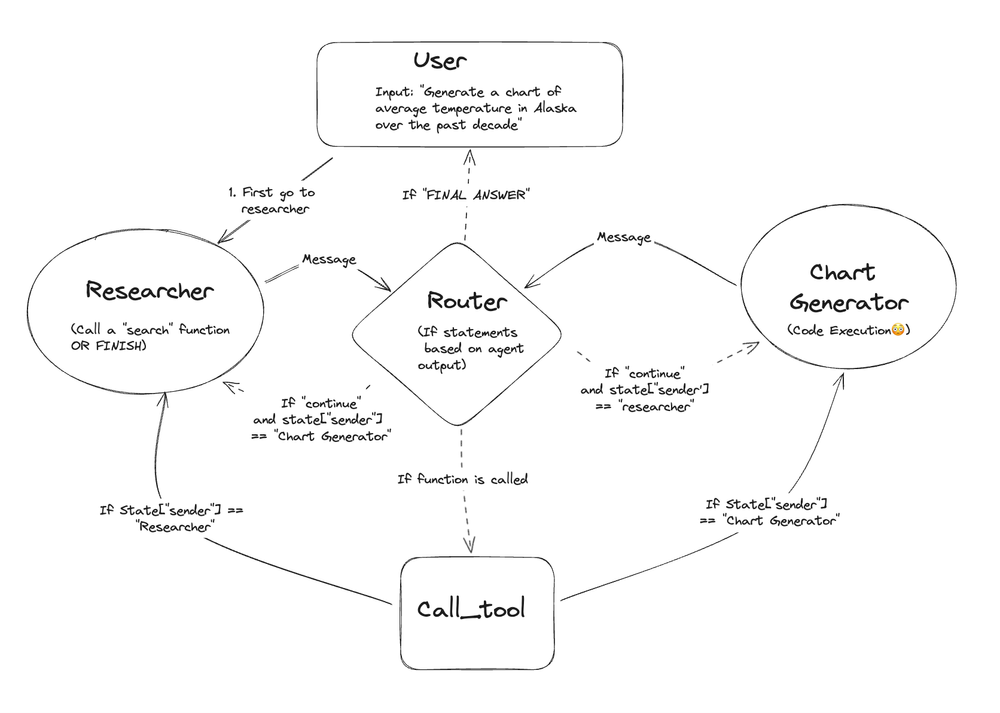
Best practices today:
- Start with pilot projects in low-risk, high-value areas.
- Build a data foundation - agents are only as good as the data they can access.
- Leverage trusted vendors, unless you’re comfortable experimenting with startups.
- Focus on augmentation, not replacement - agents as digital colleagues, not employees.
- Define clear AI agent goals and use cases.
- Prepare employees for a shift from routine to strategic work.
- Prioritize observability - log what agents do, how, and why.
- Adopt “align by design” - deploy within business guardrails, not outside them.
Leadership Takeaways
For business leaders, the key is to approach agentic AI with both ambition and caution. The technology is not a silver bullet, and it should not be expected to transform organizations in a single leap. Visionary leaders will be those who balance bold exploration with practical investment, focusing on areas where ROI is tangible and risks are manageable. They will ensure their leadership teams are educated enough to engage directly with AI decisions rather than outsourcing understanding to vendors. They will start small with agents rather than fully agentic systems, experimenting with pilots in areas like customer service or operations before scaling more widely. And they will insist on rigorous governance.
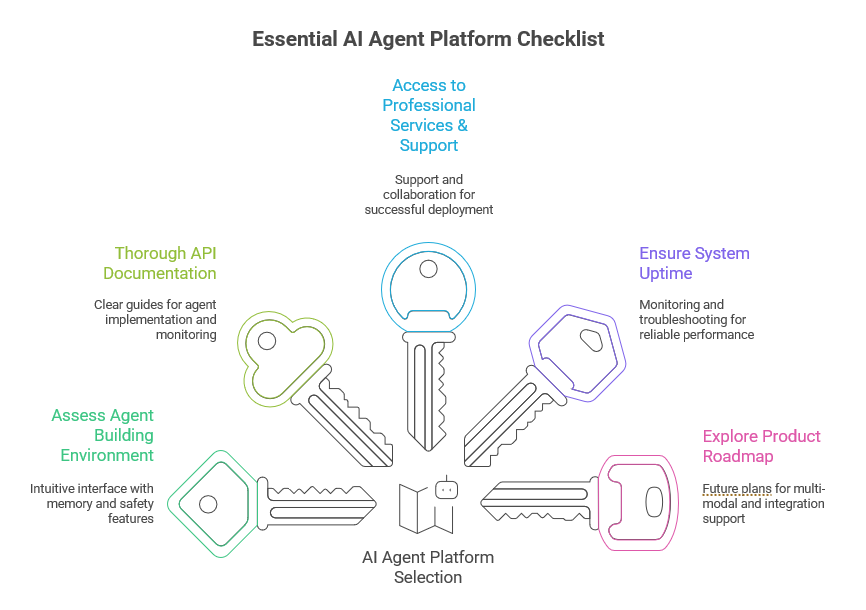
Ultimately, successful adoption will also depend on culture. Employees must be empowered with training and reassured that AI is a tool for collaboration, not replacement. Teams should feel part of the transformation, not sidelined by it.
Agentic AI won’t run your organization while you sleep. But it can help your people run it better when you’re awake. The organizations that win will be those that adopt purposeful, pragmatic solutions rather than chase shiny promises.
------------------------------------------------------------------------
Subscribe to the AI newsletter and join the conversation on LinkedIn.
Have you begun to use AI yet? Or are you struggling to achieve tangible value from your deployments of AI to date?
Explore our offerings and acquire an expert partner today.
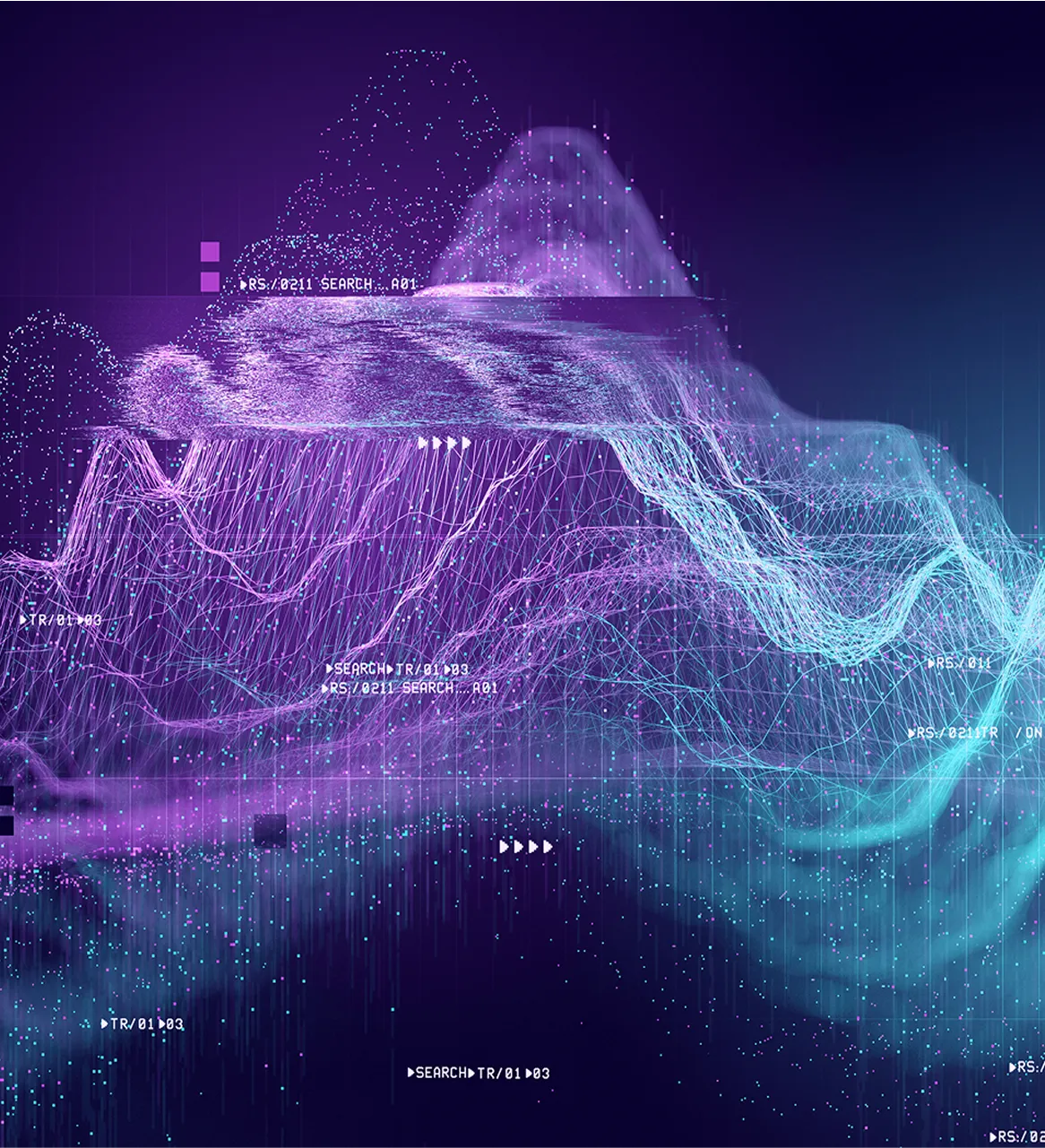
About The dAIta Solution
The dAIta Solution provides strategic consultancy, process and data mining, analytics, reporting and automation implementation solutions powered by AI that enable organizations to achieve their full potential hidden within the information that they possess. Our proprietary mining and analytics techniques and vendor-agnostic AI and data software streamlines the path to results and facilitates automation of both the analysis of your organization and implementing solutions to weaknesses or growth opportunities identified. Founded by senior consultancy services executives, data scientists and former EY leaders, The dAIta Solution is headquartered in Los Angeles with operations in London, Lagos and Singapore. For more information, please visit thedaitasolution.com.
Latest Resources
Want to see The dAIta Solution in action?
Get in touch now for a free demo of the platform, our products and services





